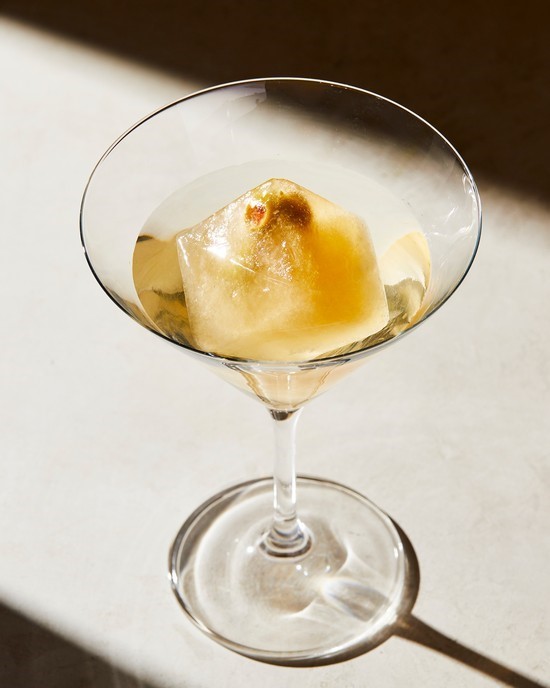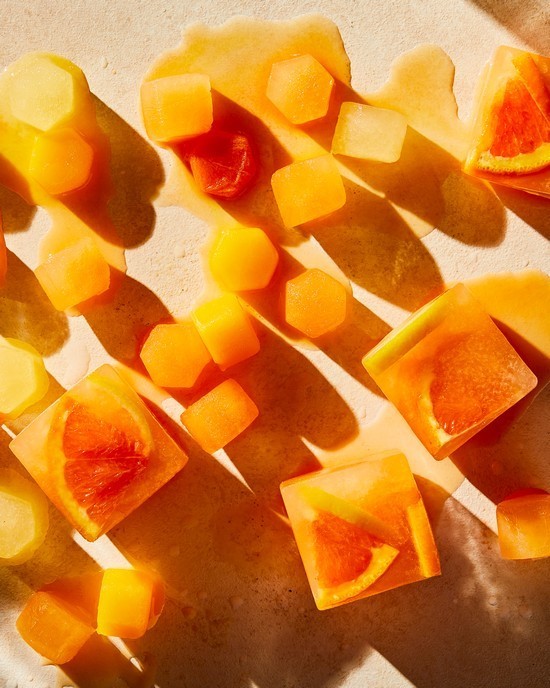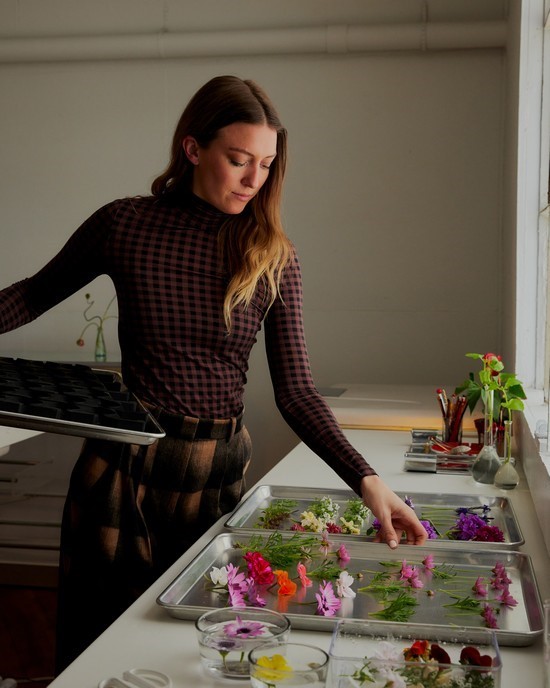Nobody loves ice more than Americans.
It is a running joke, a quirk of the national personality: Iced drinks are as
American as rock ’n’ roll, pickup trucks, and to-go cups.
اضافة اعلان
Way back in 1895, Mark Twain wrote that ice
had become so inextricably linked with the US that “there is but a single
specialty with us, only one thing that can be called by the wide name
‘American.’ That is the national devotion to ice-water.”

For years to come, all ice was good ice. But
now it is entering a new Gilded Age. Frozen water, which costs most Americans
virtually nothing, is being redefined as a luxury item.
At fashion-brand parties, ice cubes stamped
with the company’s logo are de rigueur. On tables at high-end weddings, fairy
lights in Mason jars are out and wildflowers suspended in $14 ice cubes are in.
TikTok creators routinely draw 30 million views overnight (and sizable
paychecks) by showing off stocked ice drawers, along with retail links for
buying specialty ice molds in all shapes and sizes. Then there is the pinnacle
of domestic opulence: a countertop ice maker that turns out the pebble-shaped
“nugget ice” previously available only at fast-food chains.
 The TikTok ice boom
The TikTok ice boom“I have almost 75 ice molds,” said Kami Mehta,
a TikToker who late last year started sharing the dozens of types of ice in her
Florida freezer. Since then, several other influencers have followed suit,
drawing a huge audience: Ice is not just frozen water for your drink, it is a
blank canvas for your artistry.
Ice is not just frozen water for your drink, it is a blank canvas for your artistry.
“It’s amazing how many people are doing it,”
she said of the videos. “You have to be creative now.”
As in so many arenas of culture, TikTok is
leading the way. In the past year, #icetok, a hashtag with nearly 950 million
views, has become a social media phenomenon. Videos posted under the tag
include tutorials for making “powdery ice” and the pouring of all manner of
liquids into ice machines. (Say hello to hot-sauce ice, SpaghettiOs ice and,
perhaps as an antidote, Pepto Bismol ice.)

But most popular among the TikTok genre is the
subgenre of ice-drawer restock videos, which are themselves an offshoot of the
strangely soothing #cleantok mania that swept social media through the
pandemic. Restock videos, which show users decanting spices into jars and
replenishing clear canisters with pantry goods, appeal to a large audience who
crave organization or the comfort of repetition. The genre gets highly
specific: guest bathroom restocks, coffee restocks, and snack drawer restocks.
During the pandemic, “I think some people made
sourdough and kimchi, and other people made ice cubes,” said Camper English, a
cocktail writer and ice obsessive best known for introducing a technique for
making crystal-clear ice to cocktail connoisseurs about a decade ago.
The nation’s ice industry was begun in 1806 by Frederic Tudor, who “deliberately cultivated a market for ice — he would give it away to bars, then get people hooked on it, and sell it.”
“I know there’s been a steady increase, but
some switch flipped in the past six months,” English said. “I feel like it’s
everywhere, particularly with those videos.”

Here is what one ice restock video looks like:
An empty freezer drawer slides open and a pair of hands, in this case belonging
to Mehta, slides in plastic containers. Then 13 types of ice cascade into each
bin. First, ice in spheres, tiny rectangles, large cubes, and heart shapes.
Then the colorful ice: cubes the size of ring boxes filled with slices of
orange and lime; pink bricks of blended fruit ice for smoothies; creamy
hazel-colored ice made with frozen coffee in the shapes of roses, pumpkins, and
bulldogs. The video, posted in September, has more than 17 million views.
 The custom ice niche
The custom ice niche“It’s a fascinating thing that’s part of our
daily life,” said Leslie Kirchhoff, the founder of Disco Cubes, a four-year-old
custom ice company in Los Angeles. “And you can make it as exciting or as
normal as you want.”
For Kirchhoff, ice presented itself as an
untapped market for creativity. “Baby me had always wanted to be an inventor,”
she said, “and that came rushing back when I realized nobody was doing anything
cool with ice.” Under the Disco Cubes banner, she creates custom ice for
brand-sponsored events and private parties.
After learning English’s method for making
clear ice, Kirchhoff developed her own way of suspending objects — mostly
flowers, produce, and die-cut logos — in ice, a “pretty intense” procedure, she
said, that “takes three very specifically timed steps over three days.” She
closely guards her process, and charges a steep price: “The lowest we’ll go for
floral spheres is $8 per sphere,” she said. For a suspended logo or a pricier
flower, the tab starts at $14.
Ice in American historyAmericans have been commodifying ice for
centuries.
“America has the oldest ice industry in the
world,” said Jonathan Rees, a professor of history at Colorado State
University-Pueblo who has published three books about the development of
American refrigeration. The nation’s ice industry was begun in 1806 by Frederic
Tudor, who “deliberately cultivated a market for ice — he would give it away to
bars, then get people hooked on it, and sell it.”

By 1860, Rees said, Americans had developed a
taste for ice year-round. Before the advent of freezers, ice was cut from ponds
and lakes in colder regions and shipped to warmer climates, as far as Hawaii.
By 1875, the ice man was a ubiquitous figure, going door-to-door to fill the
iceboxes in “every house, from the richest to the poorest”, he said. Electric
household refrigeration was perfected in 1925, and the advent of ice cube trays
quickly followed.
Rees, the historian, thinks there is something distinctly American about splurging on ice. “We’re willing to spend on something that’s essentially free — that’s a sign that we value it.”
Today the same technology is still in use, but
ice making is evolving.
Many ice lovers, rather than buying dozens of
molds or learning time-intensive techniques, are simply investing in more
sophisticated appliances. In 2019, the South Korean electronics giant LG
released a fridge equipped with a freezer that dispenses what the company calls
Craft Ice, including cubed ice, crushed ice, and clear spherical ice balls —
allowing consumers to entertain, as the ads put it, “like a baller”.
Rees, the historian, thinks there is something
distinctly American about splurging on ice. “We’re willing to spend on
something that’s essentially free — that’s a sign that we value it.”
Read more Good Food
Jordan News




